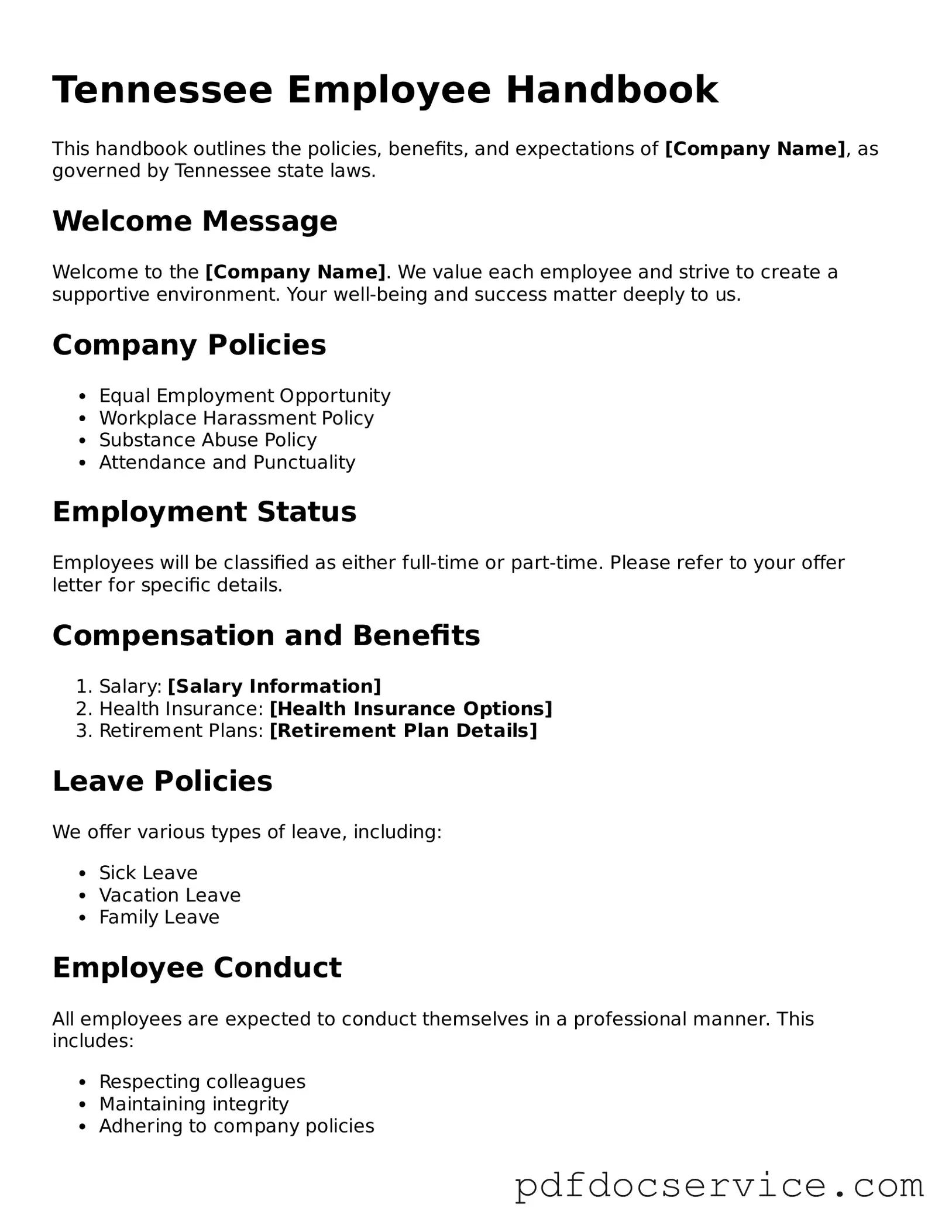The Tennessee Employee Handbook form is a document that outlines the policies, procedures, and expectations of an employer in Tennessee. It serves as a guide for employees, detailing their rights and responsibilities within the workplace.
Who needs an Employee Handbook in Tennessee?
While not legally required, having an Employee Handbook is highly recommended for all employers in Tennessee. It helps establish clear communication about workplace policies, which can reduce misunderstandings and legal disputes.
What should be included in the Employee Handbook?
An effective Employee Handbook should cover the following topics:
-
Company mission and values
-
Employment policies (e.g., at-will employment, equal opportunity)
-
Workplace conduct and behavior expectations
-
Compensation and benefits information
-
Leave policies (e.g., sick leave, vacation, family leave)
-
Health and safety guidelines
-
Disciplinary procedures
-
Complaint and grievance procedures
How often should the Employee Handbook be updated?
The Employee Handbook should be reviewed and updated regularly, ideally at least once a year. Changes in laws, company policies, or workplace dynamics may necessitate updates to ensure accuracy and compliance.
Do I need to provide a copy of the Employee Handbook to all employees?
Yes, all employees should receive a copy of the Employee Handbook, either in print or digitally. It’s important that employees acknowledge receipt and understanding of the handbook, which can help protect the company in case of disputes.
Can I include a disclaimer in the Employee Handbook?
Yes, including a disclaimer can clarify that the handbook is not a contract and that employment is at-will. This can help prevent misunderstandings about job security and employment terms.
What should I do if an employee violates a policy outlined in the handbook?
If an employee violates a policy, follow the disciplinary procedures laid out in the handbook. Consistent enforcement of policies is crucial for maintaining a fair workplace. Document the incident and any actions taken for future reference.
Is it necessary to have employees sign an acknowledgment of the handbook?
While not legally required, having employees sign an acknowledgment can be beneficial. This ensures that they have received and understood the handbook, which can be useful in case of disputes regarding policy violations.
What if I need legal advice while creating the Employee Handbook?
Consulting with a legal professional is advisable when creating or updating an Employee Handbook. They can provide guidance on compliance with state and federal laws, helping to mitigate potential legal risks.
Can I customize the Employee Handbook for my specific business needs?
Absolutely. Customizing the Employee Handbook to fit your specific business needs and culture is important. Tailoring the content ensures that it accurately reflects your workplace environment and addresses relevant policies.
